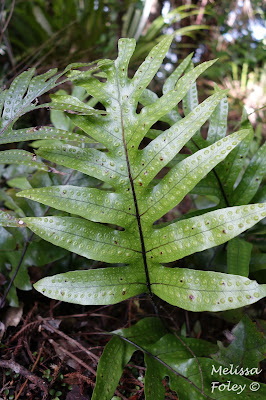A couple weekends ago we explored the far southeast corner of the Auckland region. Our first stop was the Clevedon Market, one of the best-rated farmers markets around Auckland. The market is about 20 km south of the city center and is far enough away and remote enough that Pete was starting to doubt that there would even be a market. When we arrived, the place was packed. Because it is still winter, there is actually very little produce at any of the farmers markets we have visited. This market was no different. There was one produce stall and one plant stall, and the rest were food vendors or specialty products. Our plan for the market was to find lunch for a hiking picnic, so the mix of stalls was perfect. They even had gluten-free crepes for me!
From the market, we continued further south to the Hunua Range. The Waitakere and Hunua ranges contain the largest swaths of native forest and also supply Auckland with much of its drinking water. Many of the tracks in the Hunuas were damaged by massive flooding in March, but we were still able to piece together a nice hike that included a waterfall, stream crossing, dam, and lots of hills.
The photo below is of a kill trap for possums. There were a number of these close to the trail in one area. Possums were introduced from Australia (the only mammal native to NZ is the bat) and love it here...which is a bit ironic because they are endangered in Oz. Anyway, the possums are terrible beasts here because they eat the eggs and chicks of native birds. There are a number of birds here that are flightless (they didn't evolve with mammals so had no reason to fly), making them even easier pickings for the possums. A lot of money is spent in this country trying to get rid of possums (and other mammal pests) and the entire country is trying to be pest free by 2050. One of the most effective ways to reduce the possum population is to drop a pesticide into infested areas. As you can imagine, that is controversial, but it also isn't a good method around water. Enter the kill traps. What intrigued me about the traps is the bait they use. It seemed so obvious after seeing it, but if you had asked me what they used as bait, I never would have guessed. If you look closely at the photo you will see an egg. No cheese, peanut butter, or poison. Just an egg, one of the possums favorite foods.
not the lightest hiking snack...
From the market, we continued further south to the Hunua Range. The Waitakere and Hunua ranges contain the largest swaths of native forest and also supply Auckland with much of its drinking water. Many of the tracks in the Hunuas were damaged by massive flooding in March, but we were still able to piece together a nice hike that included a waterfall, stream crossing, dam, and lots of hills.
Hunua Falls
kidney fern - one of my favorites
native trees lining the trail
cool bark patterns
the Cossey reservoir
hound's tongue fern
water spillway or entrance to the center of the earth?
The photo below is of a kill trap for possums. There were a number of these close to the trail in one area. Possums were introduced from Australia (the only mammal native to NZ is the bat) and love it here...which is a bit ironic because they are endangered in Oz. Anyway, the possums are terrible beasts here because they eat the eggs and chicks of native birds. There are a number of birds here that are flightless (they didn't evolve with mammals so had no reason to fly), making them even easier pickings for the possums. A lot of money is spent in this country trying to get rid of possums (and other mammal pests) and the entire country is trying to be pest free by 2050. One of the most effective ways to reduce the possum population is to drop a pesticide into infested areas. As you can imagine, that is controversial, but it also isn't a good method around water. Enter the kill traps. What intrigued me about the traps is the bait they use. It seemed so obvious after seeing it, but if you had asked me what they used as bait, I never would have guessed. If you look closely at the photo you will see an egg. No cheese, peanut butter, or poison. Just an egg, one of the possums favorite foods.
































